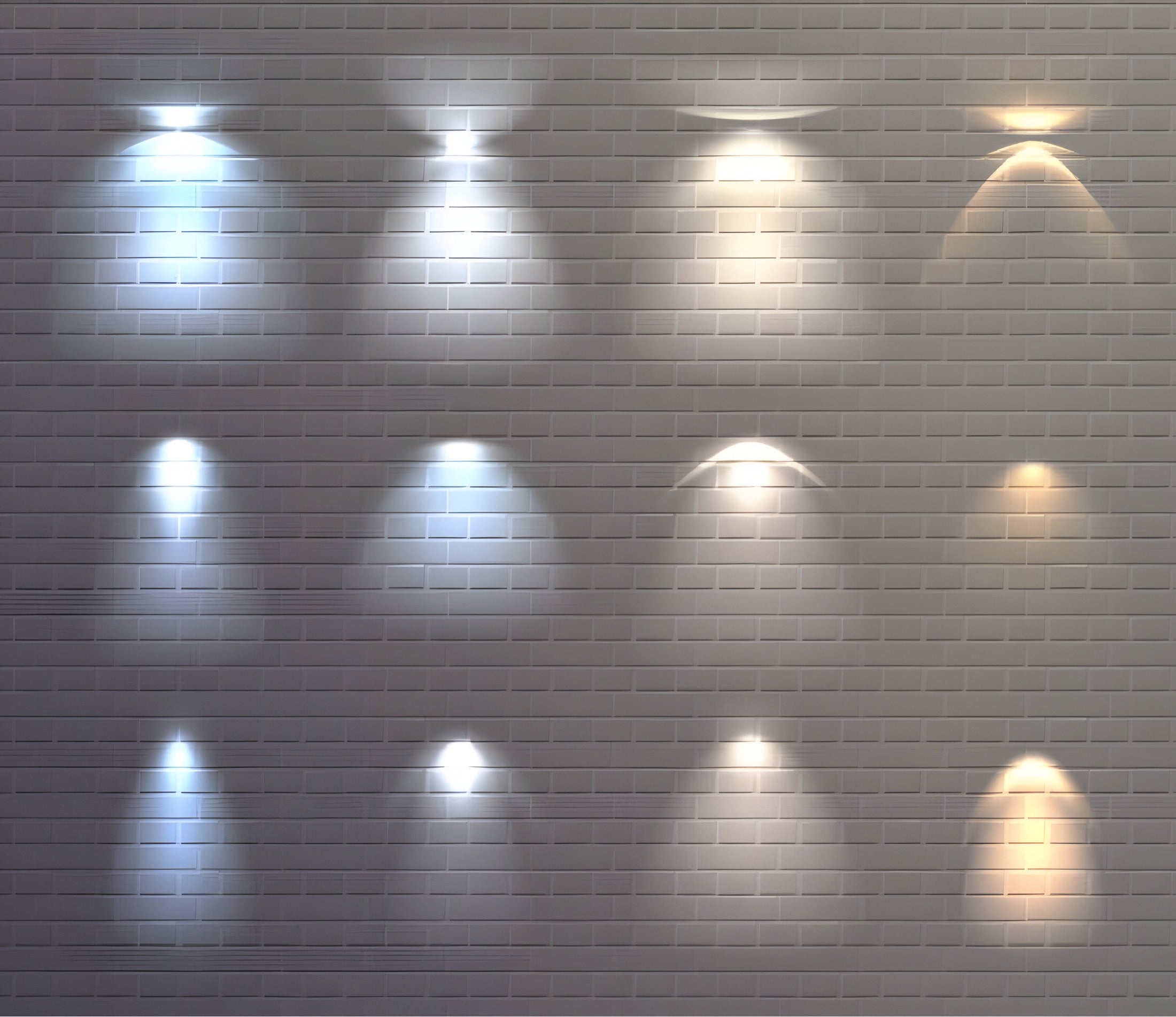


The art of putting your favorite pictures, paintings and works of art in the right light is not just a question of aesthetics, but also of technique. It is often not only the works themselves that define the room, but also the way in which they are illuminated. Whether it's a valuable painting, a family photo or a decorative sculpture, the right lighting can make the difference between an ordinary and an extraordinary space. In this article, you will learn how to showcase your artwork to its best advantage and which lighting solutions play a crucial role in this.
Works of art and objects that have a special meaning for you deserve an equally special presentation. Appropriate lighting ensures that the colors and details of a work of art stand out, while inadequate or incorrect lighting can spoil the overall impression. Lighting also plays an important role in setting the atmosphere in the room. A properly lit artwork can transform a room into a true highlight while minimizing unwanted shadows and glare.
Choosing the right lighting depends on various factors, such as the type of artwork, its size, colors and positioning in the room. Here are some basic types of lighting you should consider:
With direct lighting, the light is directed specifically at the work of art. This type of lighting is particularly suitable for paintings and murals as it highlights the details and colors. Examples of this are wall lightswhich are installed directly above the artwork. These luminaires not only provide precise illumination, but also an elegant look.
Take a look at the wall lights from BuynBlue , which are perfect for direct lighting. These lights are available in various designs, so you are sure to find an option that suits your artwork and interior.
Indirect lighting is a more subtle method in which the light is reflected from the ceiling or walls before it hits the artwork. This technique is particularly suitable for three-dimensional objects, such as sculptures or installations, as it creates soft shadows and a pleasant depth effect. Indirect lighting can also help to gently accentuate the colors of a work of art without creating harsh shadows.
A good way to create indirect lighting is to use wall lights with shades. wall lights with shadesthat diffuse the light and thus create soft, uniform illumination.
Accent lighting is used to emphasize certain features of a work of art. Here, the light is directed specifically onto an area of the artwork to highlight it. This type of lighting is ideal for works of art with special textures or details that need to be emphasized even more with targeted lighting.
An example of accent lighting could be the use of spotlights or radiant wall lights that direct a narrow beam of light onto the artwork. These luminaires can also be found in the BuynBlue collection.
Ambient lighting provides general lighting for the room and can also be used to illuminate works of art. In this case, the artwork is not illuminated directly, but by the general lighting mood of the room. This method is particularly suitable if the artwork is considered an integral part of the overall room concept.
To create harmonious ambient lighting, you can use dimmable wall lights or track lights can be used to create harmonious ambient lighting, providing uniform illumination of the room and gently bringing the artwork to the fore.
Having discussed the different types of lighting, it is also important to give some practical tips on how to light your artwork in the best possible way:
Glare and reflections can significantly impair the view of a work of art. Framed pictures with glass covers in particular can cause annoying reflections. Here you can either use anti-reflective glass or adjust the lighting so that the light beam does not hit the glass directly. The use of dimmable lights can also be helpful here to reduce the light intensity and thus minimize reflections.
The color temperature of the light plays a decisive role in how a work of art is perceived. Warm light colors (2700K-3000K) are particularly suitable for paintings with warm tones, while cooler light (3500K-4500K) sets the scene perfectly for modern works of art or photographs with cool colors. It is advisable to choose luminaires where the color temperature can be adjusted so that the optimum light color can be set depending on the artwork.
Some of the wall lights from BuynBlue offer this function so that you can respond flexibly to the requirements of your artwork.
The light intensity, measured in lumens, should be adapted to the size and details of the artwork. Larger works of art generally require a higher light intensity, while smaller objects can manage with less light. Make sure that the light is distributed evenly and that there are no excessively bright or dark areas. One way to achieve this is to use track lightswhich integrate several light sources and thus enable uniform illumination.
The positioning of the luminaires is a key factor for optimum lighting. For paintings and murals, it is advisable to position the luminaires at an angle of around 30 degrees to the artwork. This prevents glare and ensures that the light hits the work evenly. For three-dimensional objects, you should position the luminaires so that the shadows are soft and the details are clearly visible.
UV light can cause damage to works of art over time, especially to paintings, photographs and textiles. To protect your artwork, you should choose lights that emit no or minimal UV light. Many LED lights are UV-free and therefore a good choice for lighting delicate artworks. It is worth investing in high-quality LED wall lights that have been specially developed for art lighting.
Depending on the type of room and its function, different lighting strategies may be required. Here are some suggestions on how you can optimally illuminate your artwork in different rooms:
A mixture of direct and indirect lighting is often useful in the living room. Here you can use wall lights and at the same time create a warm, inviting atmosphere. Use dimmable lights to adjust the brightness according to your mood.
A large work of art often takes center stage in the dining room. A central pendant light combined with side wall lights can highlight the artwork perfectly. Make sure that the light is not too bright to maintain a pleasant dining atmosphere.
Corridors often offer space for smaller works of art or photographs. Here, a series of track luminaires can be used along the walls to illuminate the artworks evenly. Alternatively wall luminaires can be installed at regular intervals to create a harmonious overall picture.
Soft, indirect lighting is often best in the bedroom. Use dimmable wall lightsto create a relaxing atmosphere that also subtly highlights your artwork. Avoid direct, harsh light that could make the room feel unsettled.
Flexibility is an important aspect when lighting works of art. Since both the artwork and the furnishings can change over time, it is important that the lighting can also be adapted accordingly. Here are some ideas on how to make your lighting flexible:
A track system offers maximum flexibility as the luminaires can be moved along the track and realigned as required. This is particularly useful if you frequently change the placement of your artwork or regularly add new pieces.
Dimmable lights allow you to adjust the light intensity depending on the time of day or mood. This is particularly practical if you want to adapt the lighting to different works of art or room moods.
Mobile luminaires or battery-powered luminaires offer a high degree of flexibility as they can be used independently of fixed installations. These are ideal if you want to temporarily highlight works of art in different areas of the room without having to carry out complex installations.
Illuminating works of art is an art in itself. It requires both technical know-how and a good eye for aesthetics. By considering the different types of lighting, the right color temperature, light intensity and positioning, you can ensure that your artwork is shown to its best advantage.
Invest in high-quality lighting solutions that are not only functional, but also complement the design of your room. The wall lights from BuynBlue offer a variety of options to illuminate your artwork stylishly and efficiently.
By implementing the tips and strategies in this article, you can create a harmonious and appealing interior design that puts the focus on your artwork and creates a pleasant atmosphere at the same time. Because in the end, it's not just the artwork itself that counts, but also how it is presented.